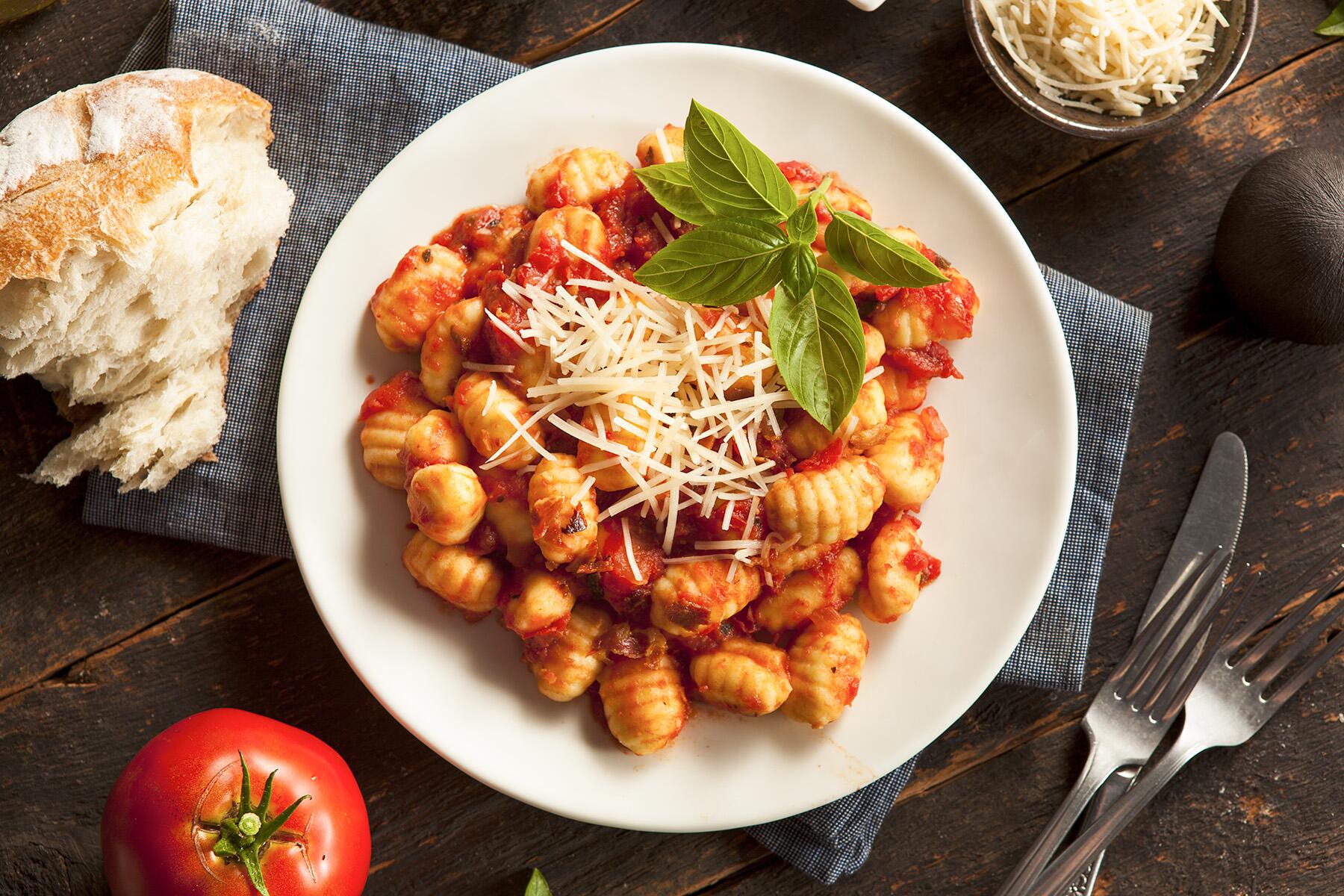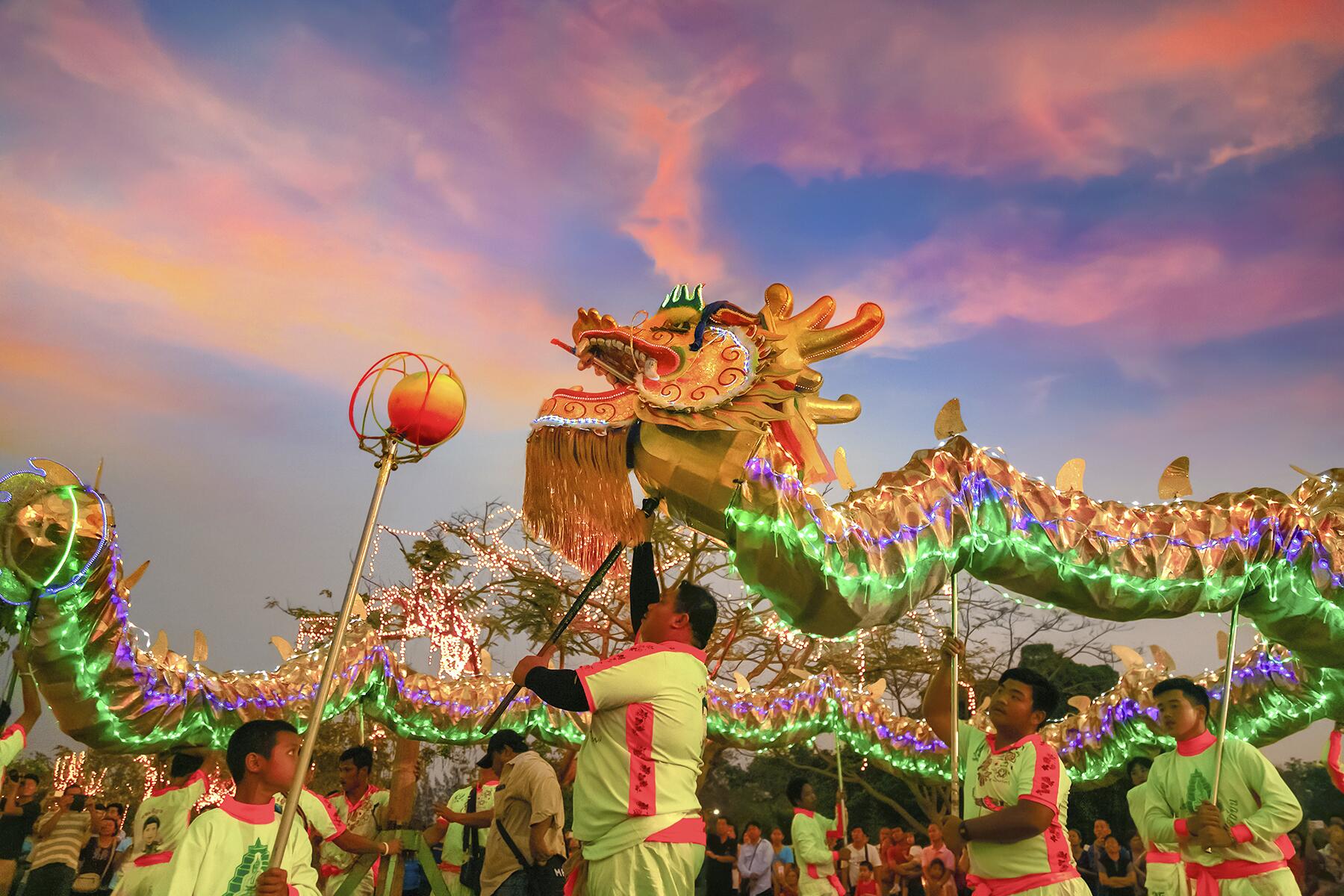- ⁄
- Travel News
- ⁄
- Bites
Oh, the luck of the duck!
Lunar New Year is soon upon us, starting February 10, 2024, and that means much of the world is gearing up for one thing: a mega feast. Yes, the event has its many traditions. Visiting temples, doing a thorough spring clean, red envelopes for the kids, and lion dances in the community’s center, but ask any Chinese family what they’re most excited about and chances are it’s the roast duck. The plump and shiny bird is to Chinese New Year what a turkey is to the US on Thanksgiving or Christmas Day. It’s the centerpiece, the main event, and what everyone will talk about long after the party. Whether you’re enjoying it unhooked from a takeout window display or sat down at a fancy restaurant this Year of the Dragon, here’s absolutely everything to know about the delicious Peking Duck on that plate.
Peking Duck Was Born in Nanjing
Although the name derives from Beijing (which was formerly Peking), the famed dish actually has origins in Nanjing, then the capital of China, situated in the eastern province of Jiangsu. A luxurious meal designed especially for emperors, in 1420 during the Ming dynasty its reigning monarch moved the country’s capital over to Peking. He brought with him the beloved duck, and over centuries its popularity grew not just in the city but all over the country, where all referred to it as “Peking Duck.”
White Pekin Ducks Are Bred for Peking Duck
No snatching a catch out of your local duck pond. The breed of duck raised for Peking Duck meat must be the similarly named, Pekin Duck. Originating from China, today they’re bred all over the world and the preferred duck variety for cooking in many countries, thanks to their mild and moist flavor that’s not as gamey tasting as Mallard or Muscovy. It’s also larger, with a rectangular shape, believed to be perfect for roasting whole.
Recommended Fodor’s Video
It’s Quite the Effort to Make
Few Chinese families attempt to make Peking Duck from scratch, as the steps involve intricate methods best reserved for talented chefs. You start by pumping air under the duck’s skin to separate the fat, then carefully remove the innards with one slit under the wing to leave the rest of the bird intact. There’s tightening the body with hot water, wind-drying, various marinades, coatings, and roasting…and those are just the bottom basics. Every chef will have their own additional techniques.
Everybody Loves to Show Their Whole Ducks Off
Peking Duck is so important to Chinese culture that whenever given the chance, many Chinese restaurants, families, or special occasions will display it for all to see. They hang proudly in takeout windows not just as part of the cooking process (they’re hung to dry so that the skin is nice and crispy for roasting), but as a proud symbol of what the restaurant has to offer. Ducks are a symbol of good luck and prosperity, so naturally, on all big special occasions (not just CNY but also weddings), the dish comes out and proud early on the table. Oh, the luck of the duck.
The Skin Is Often the Best Part
It’s a sin to discard any skin of a Peking Duck, and for many, that’s the best part of the entire dish. France’s only Michelin-starred Chinese restaurant, Shang Palace, serves it as a separate course with pancakes. The skin is best enjoyed hot, crisp to the bite, and dipped in sugar or a sweet sauce. Each mouthful should be a smooth yet slightly salty caramel melody, highlighted by the sweet dip. At home, some people use hoisin sauce, but that brings us to the next fact…
Straight Hoisin Sauce Is for Amateurs
We get it, hoisin straight out of your H-Mart shopping cart is an easy taste fix. But real Peking Duck connoisseurs prefer to put a spin on it. Tian Mian Jiang, or sweet bean sauce, is similar but has a more fragrant and lighter feel that doesn’t overpower the taste of the duck, plus it glides beautifully over pancakes. The ingredients vary around fermented yellow soybean paste, plums, juices from roasted ducks, and aromatics. China Tang’s Chef Fong uses a secret recipe that harnesses such ingredients for the perfect pancake accompaniment.
Slicing Is Better Than Scraping
At restaurants, your whole (or half) duck is usually proudly brought to the table (see fact four) and prepared before your very eyes or taken back to the kitchen for cutting. Most places will slice your duck, which is the traditional method and the best way to enjoy prime cuts in a pancake. However, some establishments will take a fork and scrape the bird down to its bones. This disguises bad cooking and is most common for drier and lower-quality meats. Remember, if you want to taste the steak, don’t mince it up.
Plush Restaurants Like to Serve it With Caviar
It’s 2024, so of course, the world’s top chefs have sprinkled some magic on the classic. “Caviar and Peking Duck are a great flavor pairing, as the caviar adds a creamy freshness that enhances the dish’s depth and flavor. I recommend serving the skin with a little brown sugar, balancing the saltiness of the caviar and the fattiness of the duck,” says acclaimed Singaporean Chef Peter Ho of Mei Ume, who serves his with 30g of lavish Golden Oscietra.
The Pancakes Must Always Be Warm
Which is why the savory pancakes are served in a bamboo steamer. They need to be warm so that the sauce glides over the duck and meets the pancakes at a heavenly temperature. China Tang’s pancakes, made with wheat flour, are always fragrant, steamy, and soft to the touch. Then the duck, green onion, and cucumber go in before you roll and savor the first bite. Cold pancakes are a big no-no, and if you’re having them at home, microwaving a stack means things will all quickly go to an unsatisfying room temperature. It’s better to heat a couple at a time.
The Leftovers Are Reimagined
What does a Chinese family do with the rest of the duck? They certainly don’t waste it. Many like to use the leftovers for congee (a healthy rice porridge) with vegetables thrown in for added nutrition. “I like to make soup and congee with Peking Duck leftovers as the bones and skin add a lot of flavor to the dish,” adds Chef Peter Ho. Meanwhile, Chef Fong turns his into a special duck and celery mince served with lettuce cups for a ”second course.” Simply scoop it into the fresh leaf, add the mince with sauce, and enjoy with a crunch.
Finally, Do Not Confuse Peking Duck With Cantonese Roast Duck
Though they have similar appearances, Cantonese roast duck is a more casual affair than the royally-approved Peking Duck. Cantonese ducks are stuffed with star anise, ginger, spring onion, and a slew of Chinese herbs which infuse the duck through to the bone. It’s juicy and saucy and often served on a bed of white rice. Peking Duck is not stuffed and comes in a more theatrical style. With pancakes and accompaniments, the theatrics make it a clear Lunar New Year winner.







I use the leftovers for duck pho